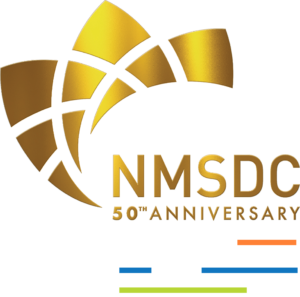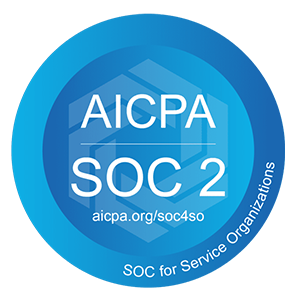Understanding Collaboration in Virtual Teams
In today’s rapidly evolving work landscape, virtual collaboration has become a cornerstone of success for organizations worldwide. Virtual collaboration refers to the sharing of information, ideas, and resources among individuals who are not physically co-located. It encompasses a wide range of online tools and technologies that facilitate communication and collaboration, bridging the geographical gaps between team members.
In a digital age where remote work is increasingly prevalent, the concept of virtual collaboration has gained prominence. According to LinkedIn, virtual collaboration enables individuals to interact and collaborate online, transcending the limitations of physical proximity. Whether it’s through video conferencing, emailing, instant messaging, or collaborative platforms, virtual collaboration empowers teams to work together seamlessly, regardless of their location.
However, while virtual collaboration offers numerous benefits, it also presents unique challenges. Unlike traditional face-to-face interactions, virtual collaboration requires individuals to adapt to digital communication channels and navigate the complexities of remote teamwork. As organizations embrace remote work and distributed teams, it’s essential to understand the dynamics of virtual collaboration and implement strategies to enhance its effectiveness.
Best Practices for Enhancing Collaboration Among Remote Workers
In today’s remote work environment, fostering effective collaboration among distributed teams is paramount. While technological tools play a crucial role in facilitating communication, successful virtual collaboration goes beyond software solutions. It requires a combination of technological innovation and human-centered approaches to create a culture of collaboration and teamwork.
Make knowledge accessible to everyone
A work culture of cooperation and knowledge sharing will guide remote teams in collaborating and solving problems together. When provided with access to company information and data, any team member can make educated and insightful decisions more easily.
For geographically dispersed teams, managers can compile information in cloud storage platforms like Google Docs and grant access to all virtual workers involved. With a designated space or tool for all company knowledge, virtual employees can smoothly access resources, make contributions, ask questions, and seek clarifications.
Establish your primary communication channels
To communicate effectively, leaders must establish primary communication channels. This helps streamline contact and keeps employees connected to the team and the company.
Some organizations utilize multiple tools for communication. For example, video conferences and brainstorming sessions can be conducted through Zoom. On the other hand, internal communication while asynchronously working on projects can be done via Slack or Teams; and customer communication can be completed through emails. Designating channels for specific types of communication also enables employees to refer back to a specific conversation easily.
When collaborating virtually, employers are encouraged to create a policy that outlines communication guidelines specifying which channels to use for each type of communication.
Schedule recurring team meetings
Managers can ensure that virtual teams stay aligned in a virtual environment by organizing regular conferences. It is important to schedule meetings that bring value to the business and promote a collaborative culture.
An online article mentioned that video meetings are often the only “face-to-face” interaction that remote employees have with each other. By holding regular video calls, managers can enhance virtual collaboration and ensure that everyone is on the same page.
However, experts remind employers not to overload remote team members with unnecessary meetings. Too many meetings may overwhelm virtual employees and make it hard for them to focus on their tasks. Schedule meetings that only bring value to the team, such as group discussions, one-on-one check-ins, and performance reviews.
Moreover, another good practice is to share meeting agendas in advance. This ensures that all team members are aware of what the meeting is about and how they can contribute, whether they have questions, comments, concerns, or suggestions.
Use icebreakers to help teams get to know each other
Another effective technique for virtual collaboration is to use virtual icebreakers.
According to Conceptboard, virtual icebreakers are quick, online team-building activities that help managers and team members connect on a personal level during online meetings. They provide a great way for team members to get to know each other better before proceeding to collaborate virtually.
Moreover, since icebreakers are less formal than regular meetings where everyone introduces themselves, they can help your team build a more human connection. Icebreakers give team members time to loosen up before engaging in important tasks.
Here are some of the most common icebreakers:
All of these are short, fun, and simple. The best part is team managers can run these virtual games on various platforms and invite as many participants as they want.
- Two truths and a lie
- Quick questions
- Take a picture of
- Choose your favorite
- Trivia icebreaker game
- Virtual scavenger hunt
- What, where, when?
Read here to learn more about the concept and how to conduct each icebreaker.
Adopt the right collaboration tools
For improved virtual team collaboration, experts advise employers and managers to explore using various collaboration tools for specific situations.
Most work tools were designed for when the majority of the workforce or the entire team was in the office. Now, colleagues live in different time zones, and remote work opportunities continue to increase. People across the globe now have the choice to stay at home and work virtually. The growing demand for work-from-home employees has challenged developers to create tools and software that make connecting virtually a seamless transition from the traditional work arrangement.
Here are the most common team collaboration tools best used for remote and hybrid work:
Communication tools for instant messaging
- Slack
Video conferencing tools
- Microsoft Teams
- Zoom
Project management tools
- Asana
- Jira
Company knowledge management tools
- Confluence
- Notion
Content creation or word processing tools
- Google Workspace
- Canva
Visual collaboration software
- Mural
Employers and managers must take stock of the tools and apps they already have at work to identify any gaps that hinder the whole team from collaborating effectively. For example, a company might have a chat tool, but they need to adopt a video conference tool for virtual meetings and a visual collaboration tool for workshopping, planning, and other collaborative activities.
Why Is Virtual Collaboration Important?
A work culture that emphasizes virtual collaboration ultimately leads to faster work performance and heightened productivity. This is one of the many reasons why promoting remote team collaboration is important.
According to modern workforce experts, virtual collaboration is also important because it serves as a tool for employee attraction and retention. A collaborative culture drives employee engagement and appeals to both current and future employees. When workers feel valued and important in their roles, they are more likely to stay and perform their duties to the best of their abilities. A business owner should aim to create a workplace that radiates positive energy because healthy employees, both mentally and emotionally, drive productivity and creativity.
Lastly, virtual collaboration encourages a culture of learning. When working together on a shared project, virtual workers regularly engage in collaborative interactions and contextualized discussions. This situation offers opportunities to learn more, gain new perspectives, and discover innovative ways of thinking. The free exchange of ideas in a communal culture maximizes the chance for teams to learn from each other’s experiences, creating an environment conducive to lifelong learning.
Hire Professional Virtual Employees For Seamless Collaboration At Work
If you’re seeking highly skilled virtual assistants or remote employees with specific skill sets, contact Remote Raven now.
Remote Raven is an outsourcing and offshoring company that provides workforce solutions for businessesacross various industries. Our highly-trained Talent Acquisition Specialists can search for qualified candidates whose skills match your specific business needs.
The company exclusively works with talented individuals from the Philippines. Virtual workers from the Philippines offer numerous advantages for any business: they have modest salary expectations, are tech-savvy, and possess exceptional English proficiency. Moreover, Filipino work ethics are compatible with Western culture.
If you require a virtual employee, Remote Raven can connect you with a talented one. Even in a remote environment, a skilled remote worker can conduct customer surveys and competitor analysis, perform market research, utilize the internet for reliable sources and databases, organize important information, collaborate with remote teams, provide administrative support, stay updated with marketing trends, and handle various other tasks. A virtual assistant with specialized research skills is a valuable asset to any business. With their exceptional abilities, they can assist in compiling data before leaders make decisions, boost client acquisition through research, and analyze information about competitors’ products or services. Business owners can stay focused on income-generating duties and larger business goals when they hire virtual employees to handle administrative jobs and routine tasks.
From creating a job description to hiring and onboarding, Remote Raven will help you and your business navigate the process of finding the best remote employee. Our agency will select qualified candidates and assist you in choosing the applicant who can bring the most value to your company.
Schedule an appointment with Remote Raven now to begin the process of finding the best remote employees for your business! You can ask all your questions and inquiries during the initial consultation. We will explain the hiring procedures, help you better understand remote employee compensation rates, expound on basic remote work policies, and discuss various other topics that arise when hiring a remote employee for the first time. If you want to avoid feeling overwhelmed by the process of onboarding a virtual worker from a foreign company, reach out to the best workforce solutions company – Remote Raven.
Contact us now and schedule an appointment!
###





